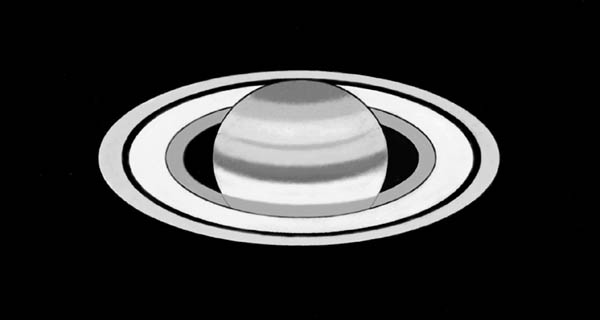I would like to wish everyone the best of holidays and a Happy New Year. I have attached my latest observation of Saturn using a different instrument (8-inch F/5 Konus Newtonian reflector). I hope that you like it.
Date (U.T.): December 15, 2002
Time (U.T.): 02:20
CM1 270.4, CM2 231.4, CM3 304.0
B (Saturnicentric latitude of the Earth): -26.5
Instrument: 8-inch (20-cm) F/5 Konus Newtonian reflector
Magnification: 203x
Filter: None (IL)
Seeing (1-10): 5-6, Antoniadi (I-V): III
Transparency (1-6): 2-3 (Hazy)
Notes:
Globe:
South Polar Region (SPR): Appeared dusky to dark (3-4/10) without any other detail visible.
South South Temperate Zone (SSTZ): Appeared dull (5/10) and greenish in color.
South Temperate Zone (STZ): Appeared shaded (6/10) but no other detail visible within.
South Temperate Belt (STB): Appeared dusky (4/10) and thin.
South Tropical Zone (STrZ): Appeared bright (7/10) and no other detail noted within.
South Equatorial Belt (SEB): The southern half appeared dusky (4/10) whereas the northern half was dark (3/10).
Equatorial Zone (EZ): Appeared bright (7/10), but no other detail visible within.
Rings:
Ring A: Appeared dull (5/10), but the Encke minima (or division) was not visible at this time.
Ring B: Appeared bright (7/10) but no other detail visible within.
Ring C (Crepe): Appeared shaded (6/10), but no other detail visible within.
Carlos
Attached Image:



